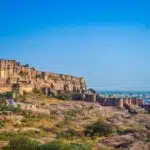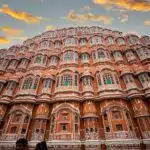Hampi, located in the southern state of Karnataka, is a UNESCO World Heritage site and one of India’s most captivating historical destinations. Once the capital of the prosperous Vijayanagara Empire in the 14th century, Hampi is now a vast, open-air museum of ancient temples, palaces, and stunning rock formations. The city’s rich history, coupled with its surreal landscape of boulders and ruins, makes Hampi a must-visit for history buffs, architecture enthusiasts, and nature lovers alike.
The Virupaksha Temple: The Heart of Hampi
The Virupaksha Temple, dedicated to Lord Shiva, is one of the oldest functioning temples in India and remains the spiritual center of Hampi. The towering gopuram (gateway tower), which stands at 50 meters, welcomes visitors into a complex of shrines and courtyards filled with intricate carvings and mythological stories.
As you wander through the temple, you’ll come across pillars carved with depictions of gods, goddesses, and legendary figures from Hindu epics. The temple remains an active place of worship, with pilgrims and devotees gathering to offer prayers, especially during the annual Hampi Festival, which celebrates the region’s vibrant cultural heritage.
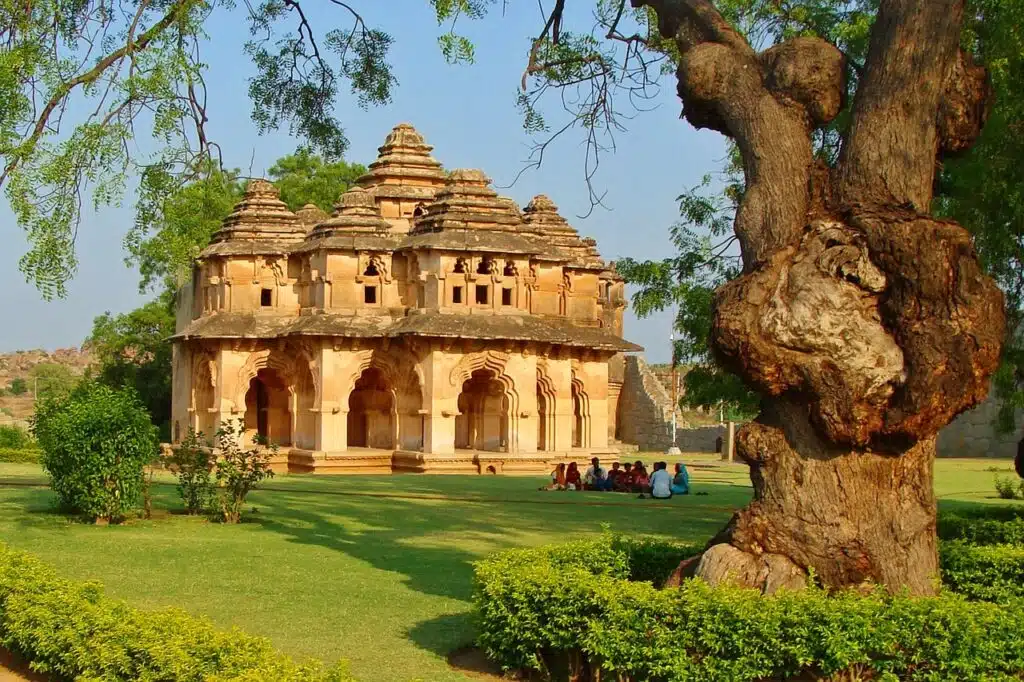
Vittala Temple: Architectural Masterpiece
One of Hampi’s most iconic landmarks, the Vittala Temple, is renowned for its exceptional architecture and the famous stone chariot that has become a symbol of Karnataka’s rich history. Dedicated to Lord Vishnu, this temple complex is a testament to the architectural genius of the Vijayanagara Empire, with its intricately carved pillars and pavilions.
The musical pillars of the temple are a unique feature—when tapped, they produce melodic sounds that resemble musical notes, an engineering marvel that continues to fascinate visitors. The stone chariot in the temple courtyard, with its wheels that were once functional, is another highlight and a perfect spot for photographs against the backdrop of Hampi’s ruins.
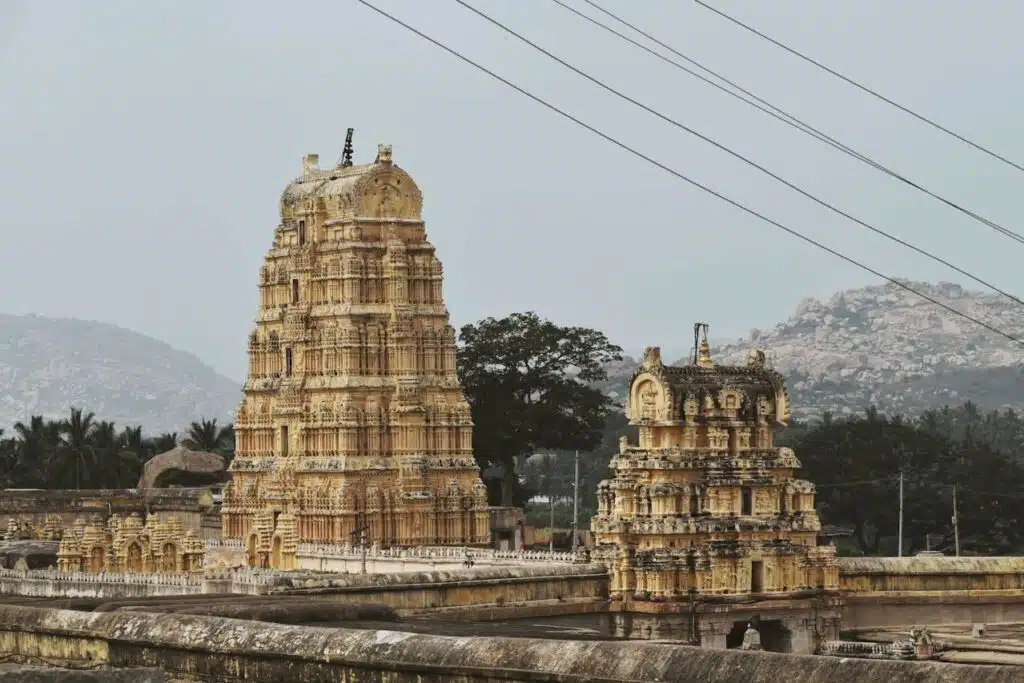
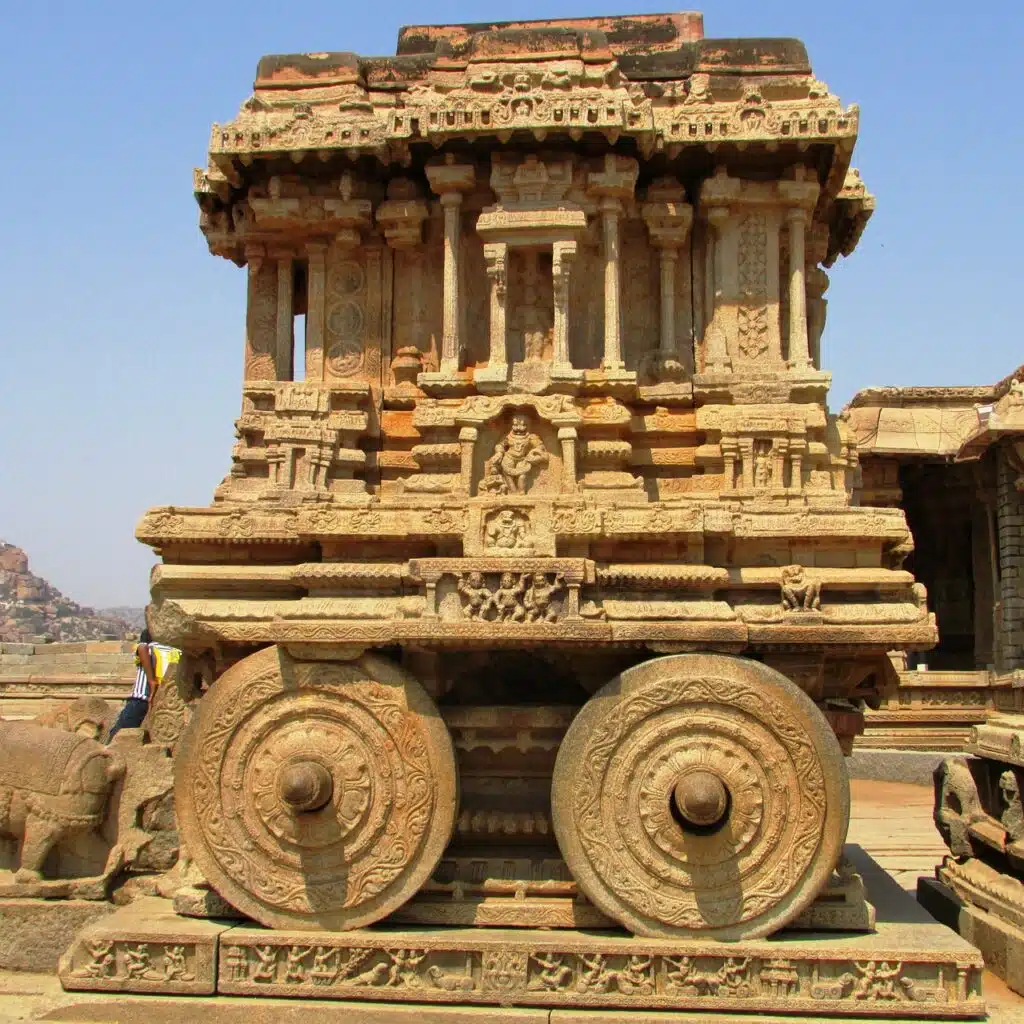
Hemakuta Hill: Panoramic Views and Temples
For breathtaking views of Hampi’s landscape, Hemakuta Hill is the perfect spot. This rocky hill is dotted with small temples and pavilions that date back to ancient times, offering a peaceful retreat and a place to take in the panoramic vistas of the surrounding ruins. The hill is also a popular spot to watch the sunrise or sunset, as the golden light illuminates the boulders and temples, creating a magical atmosphere.
The climb up Hemakuta Hill is relatively easy, and the rewards at the top are well worth it. The serene environment and stunning views of the Virupaksha Temple and Hampi’s ruins make it a favorite among photographers and travelers seeking tranquility.
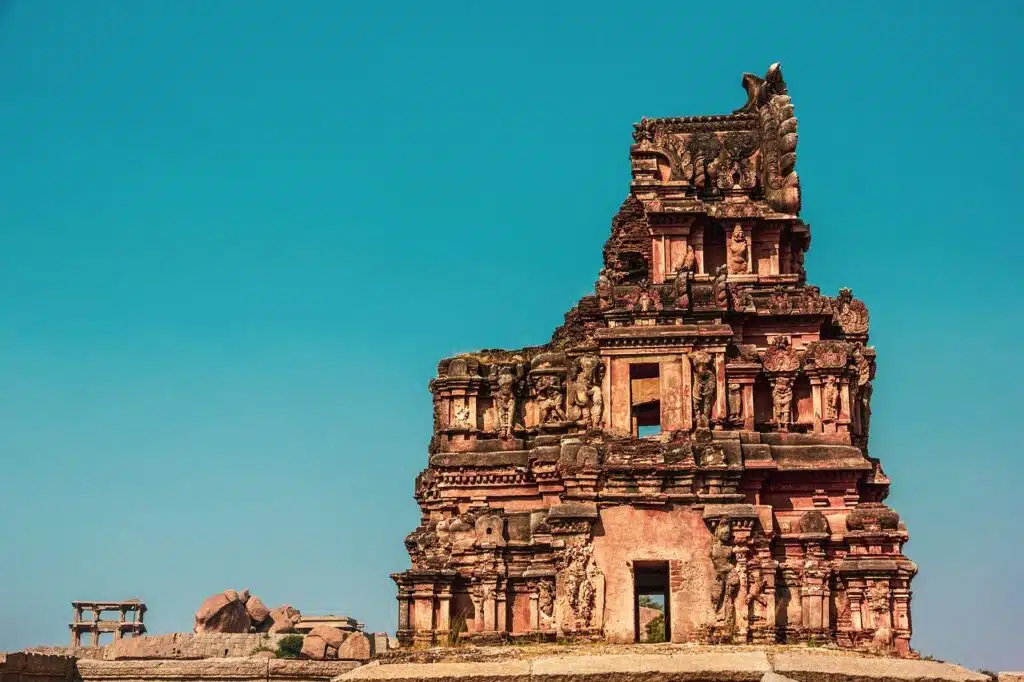
The Royal Enclosure: Glimpse into the Past
The Royal Enclosure is the area where the Vijayanagara kings once lived and governed. This sprawling complex consists of various structures that reveal the grandeur of the empire’s past, including the Mahanavami Dibba, a massive platform used for royal ceremonies and festivals, and the Stepped Tank, an intricate water reservoir that showcases the advanced engineering of the time.
Another highlight of the Royal Enclosure is the Queen’s Bath, a luxurious bathing complex that reflects the opulence of the Vijayanagara rulers. The well-preserved architecture, with arched corridors and balconies, gives visitors a glimpse into the royal lifestyle of the era.
Exploring the Boulders and Nature
Hampi is not only known for its historical significance but also for its stunning natural landscape, dominated by giant boulders scattered across the terrain. These rocks, some of which balance precariously on one another, create a unique and surreal environment that feels like a natural playground. Bouldering has become a popular activity in Hampi, attracting adventure enthusiasts from around the world who come to climb these ancient stones.
In addition to bouldering, Hampi’s proximity to the Tungabhadra River provides opportunities for boat rides and coracle (traditional round boat) experiences. Crossing the river to explore the surrounding villages and hilltops offers a deeper connection to the rural charm of the area.
Best Time to Visit Hampi
The ideal time to visit Hampi is between October and February, when the weather is pleasant and conducive to exploring the ruins and trekking the surrounding hills. Summers in Hampi can be extremely hot, making it difficult to enjoy outdoor activities during the day.
Travel Tips in Hampi
- Footwear: Many of Hampi’s sites are temples or sacred spaces, so be prepared to remove your shoes frequently. Comfortable, easy-to-remove footwear is recommended.
- Exploring the Ruins: Hampi is best explored on foot or by renting a bicycle or scooter, which allows you to cover more ground while enjoying the scenic beauty of the area.
- Guides: Hiring a local guide is highly recommended to fully understand the historical and cultural significance of Hampi’s monuments.
Hampi is a destination where history, spirituality, and nature come together in perfect harmony. Whether you’re exploring the intricate temples, marveling at the ancient ruins, or simply enjoying the surreal landscape, Hampi offers an unforgettable journey through time and beauty.



